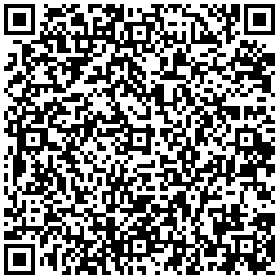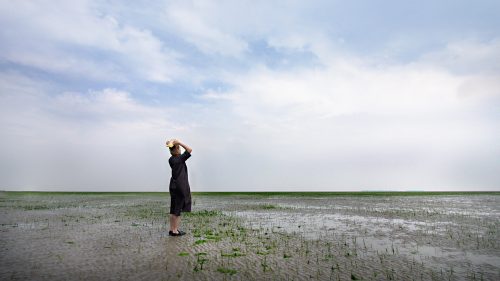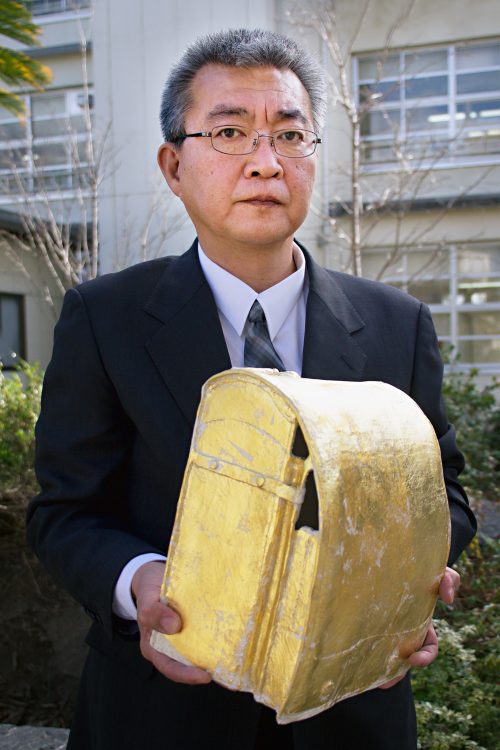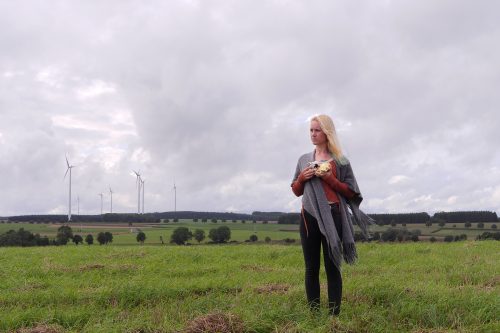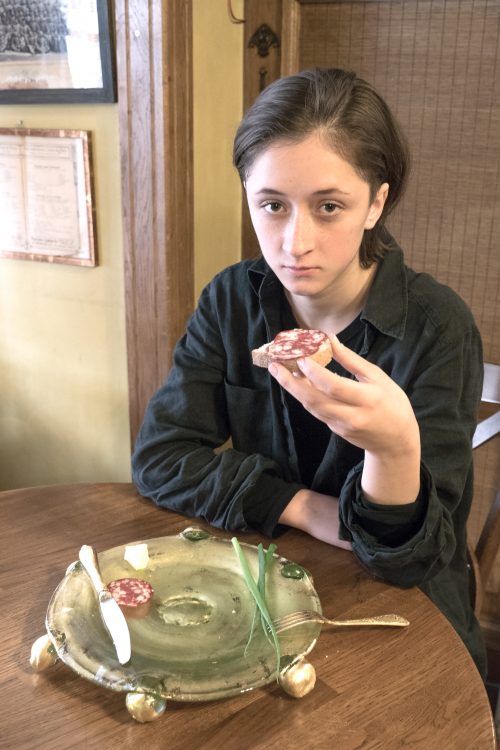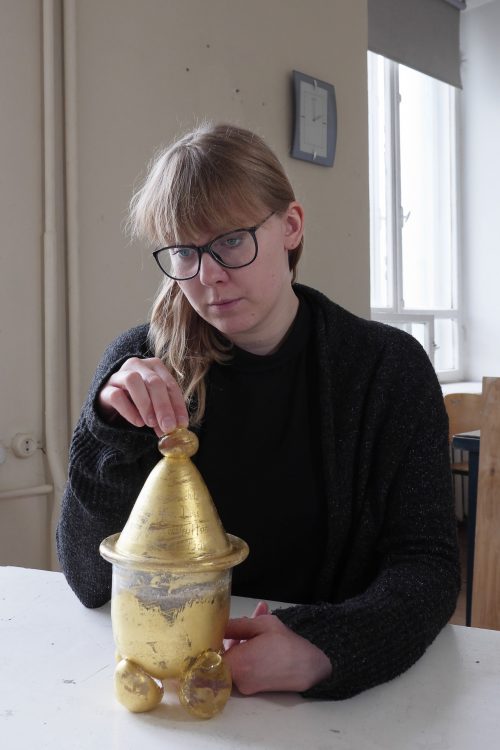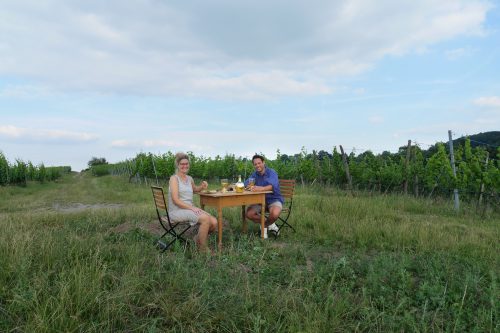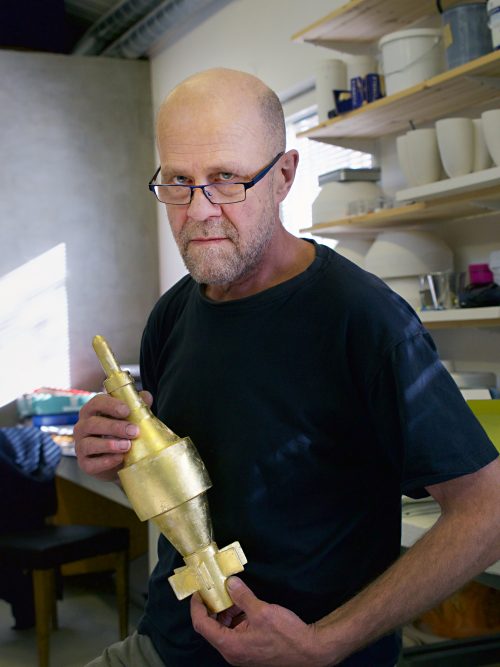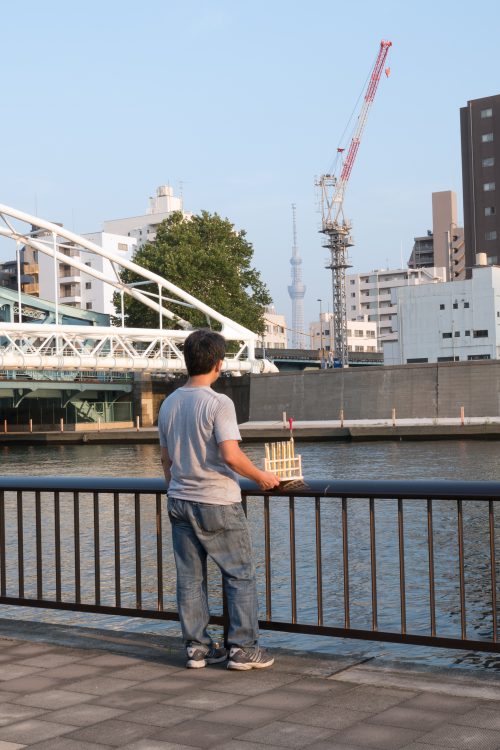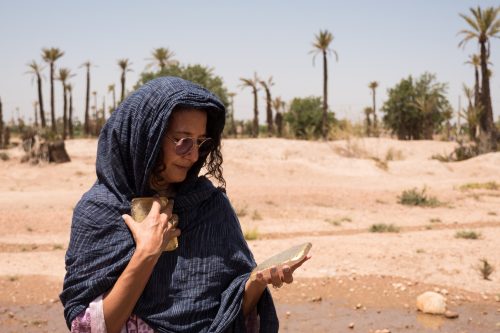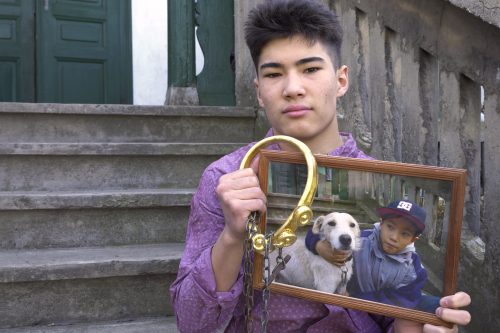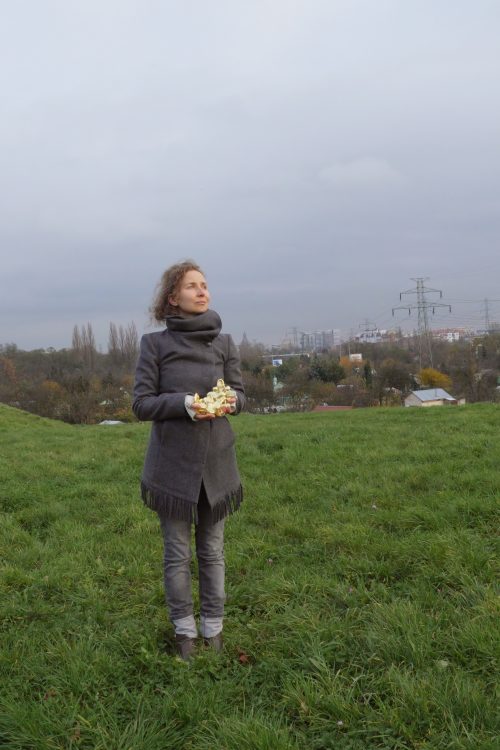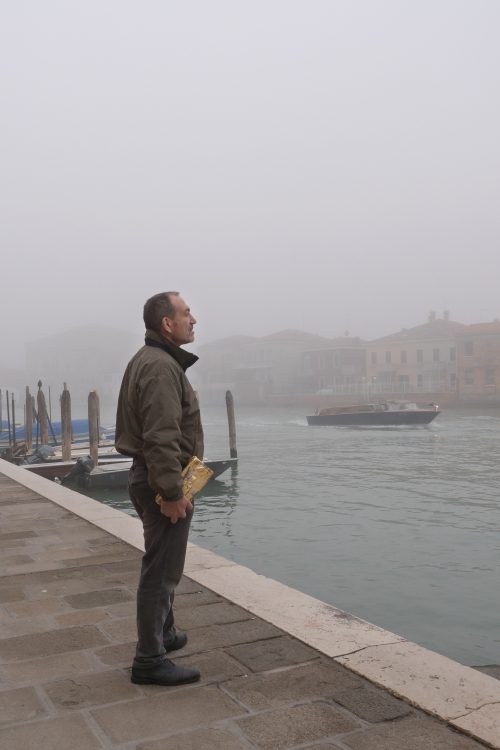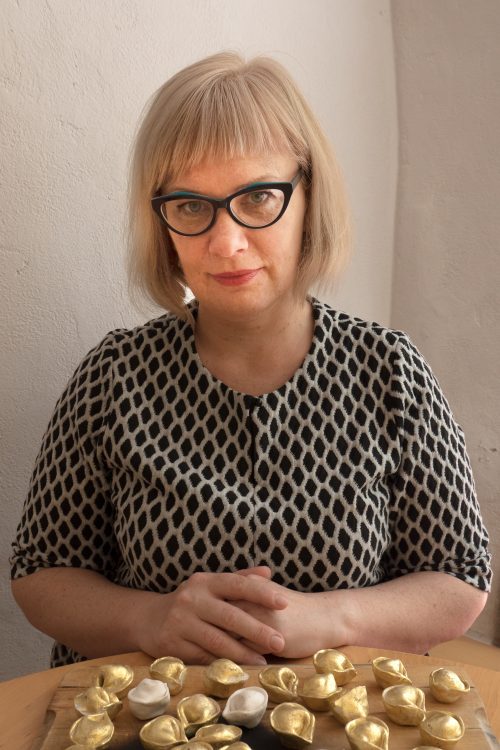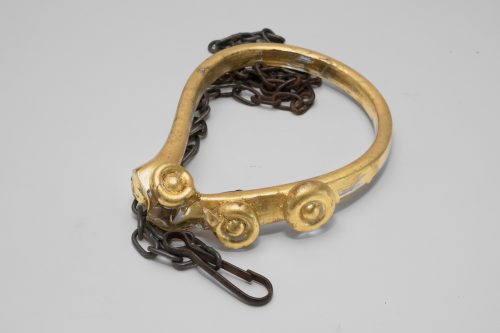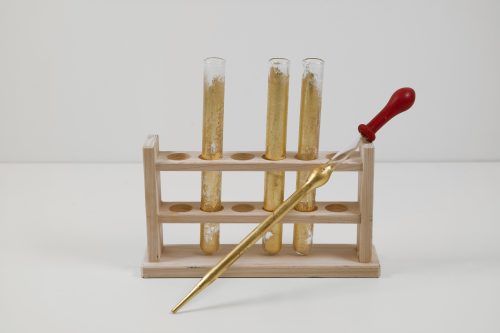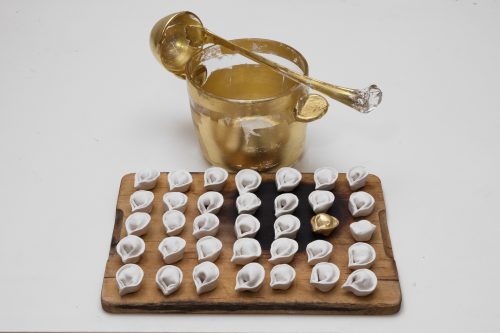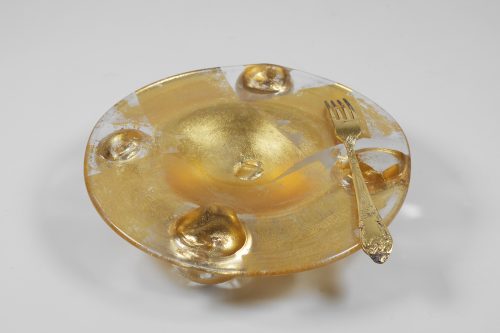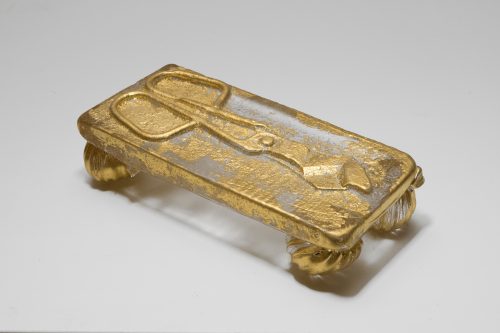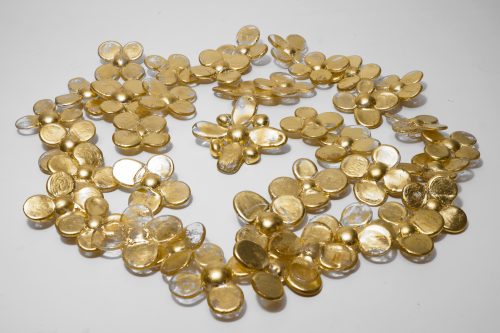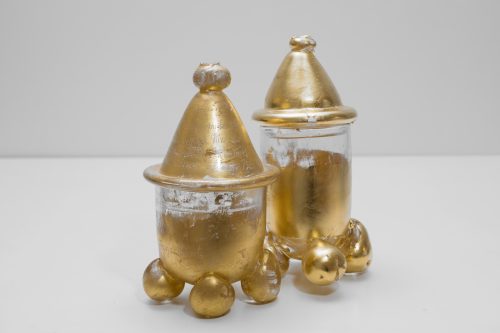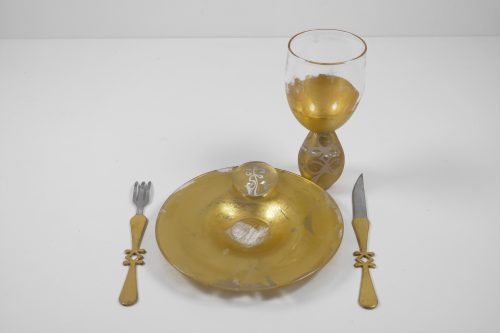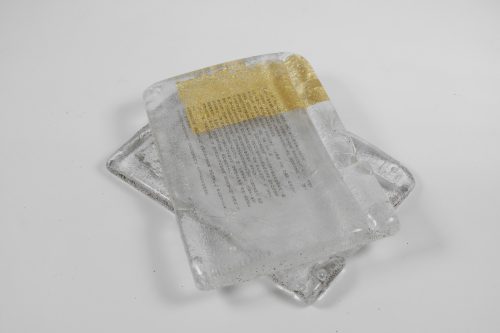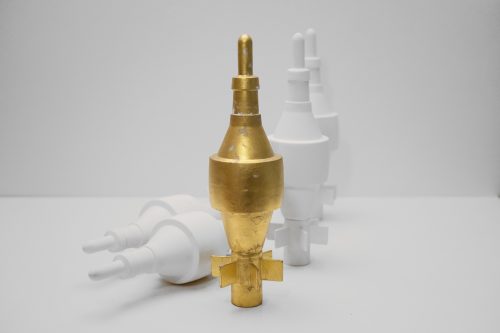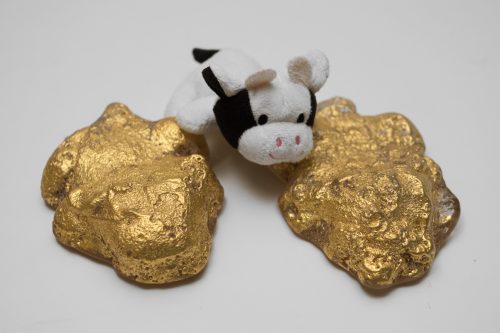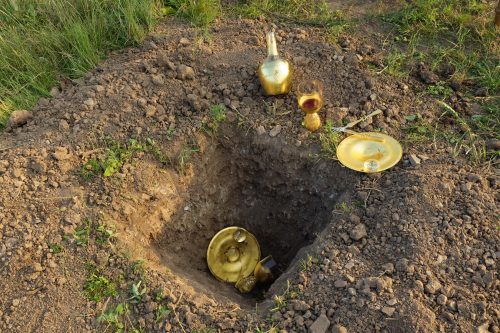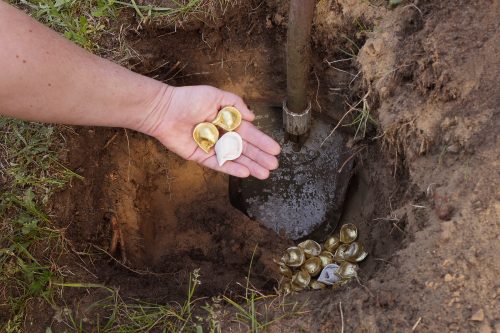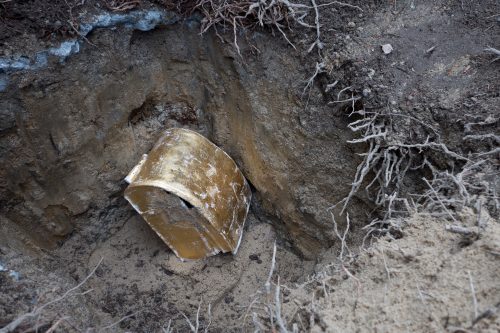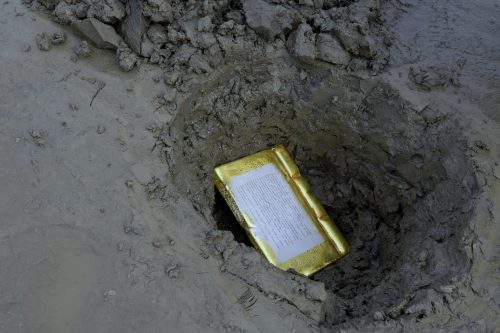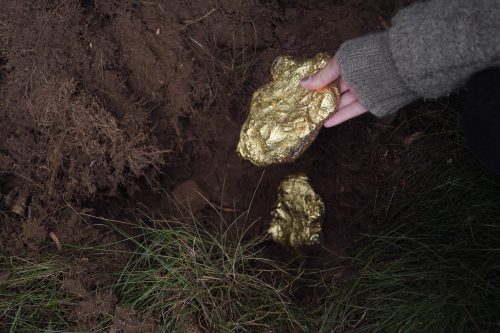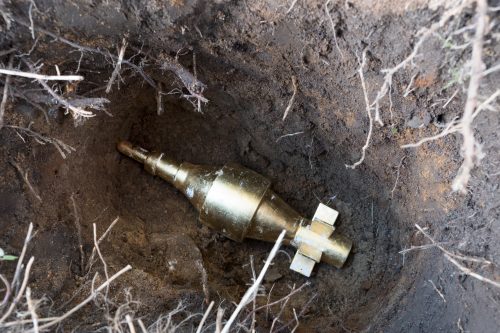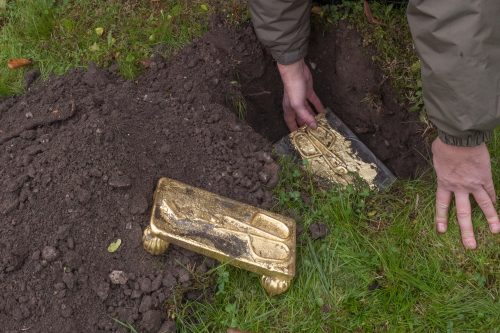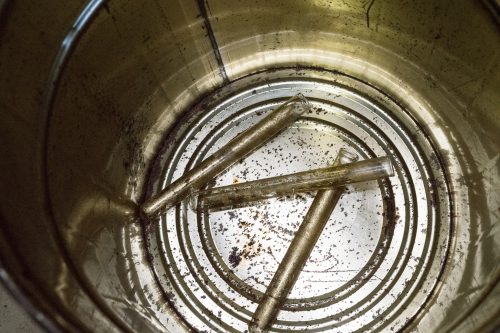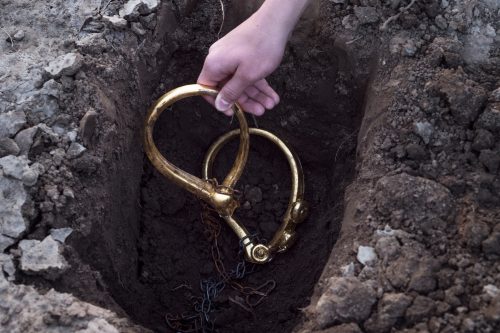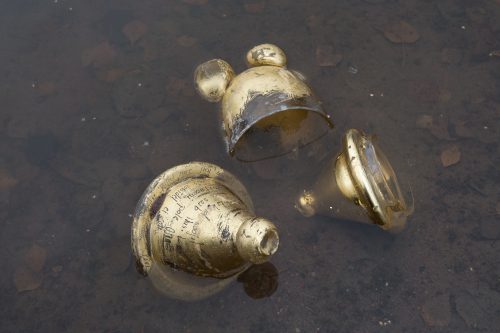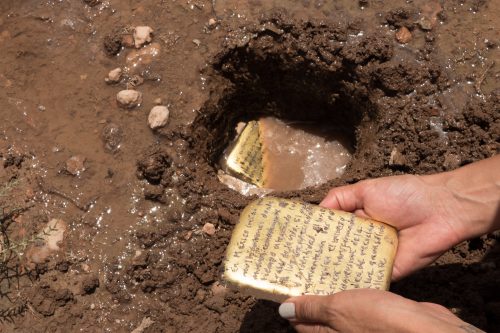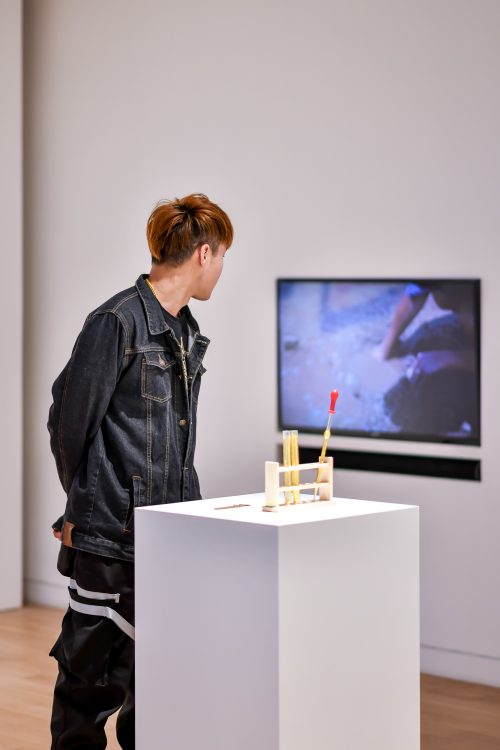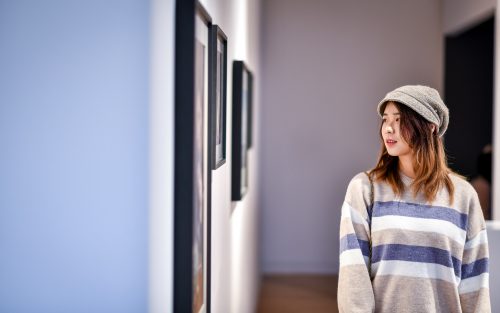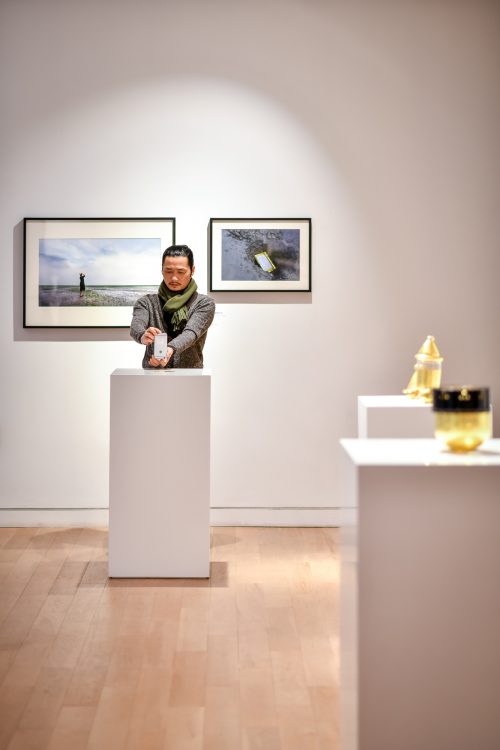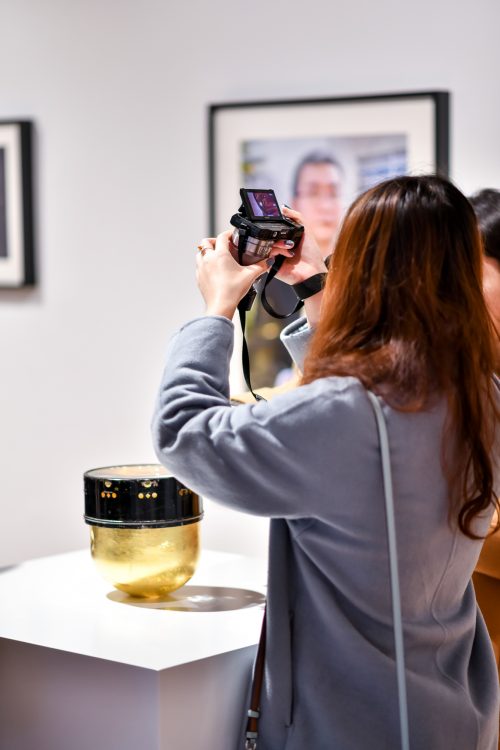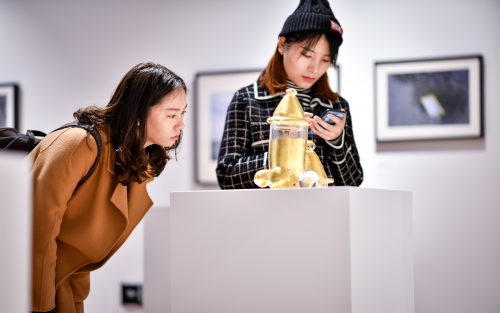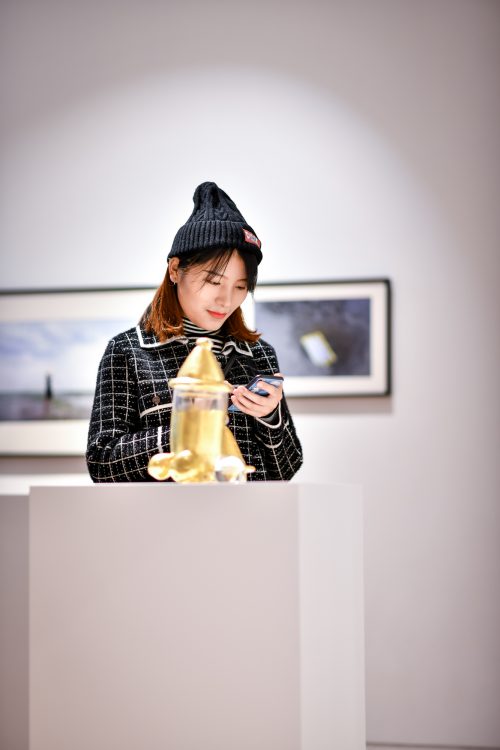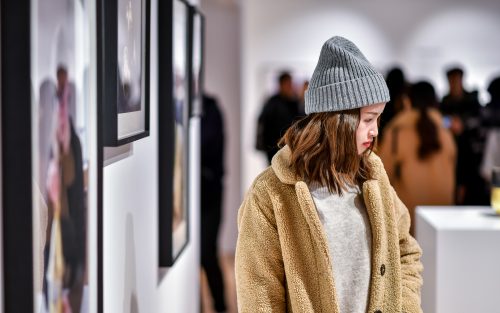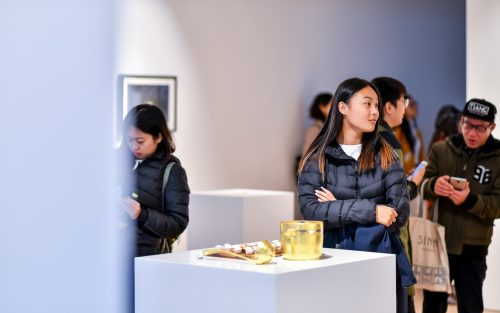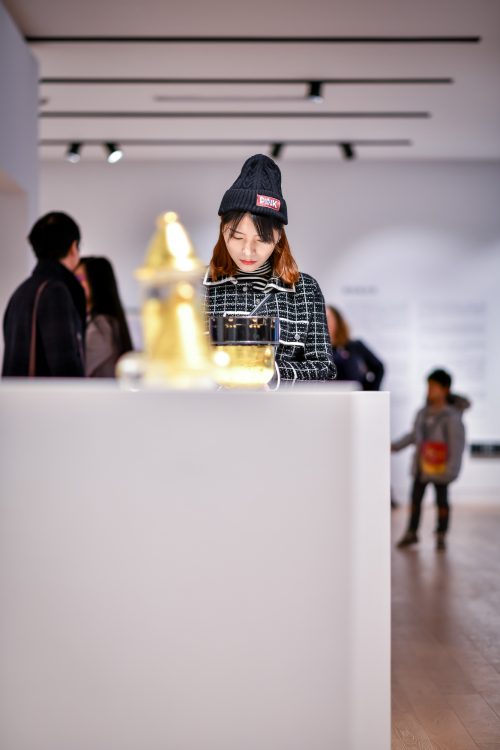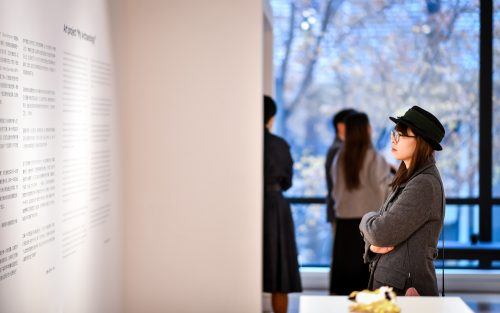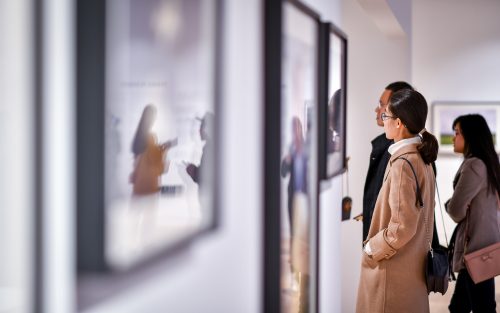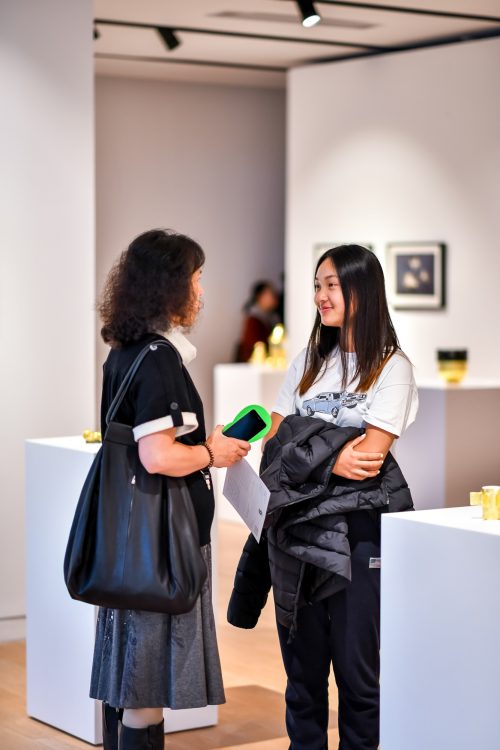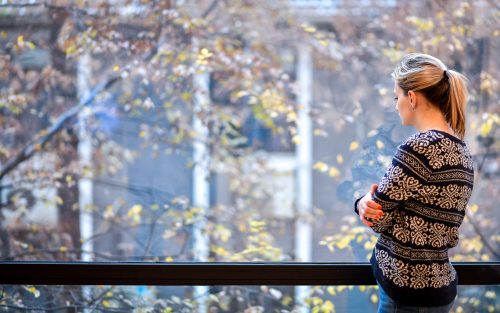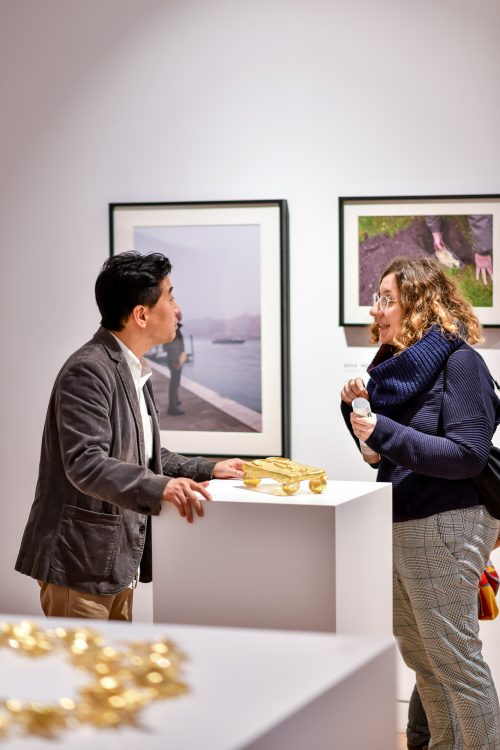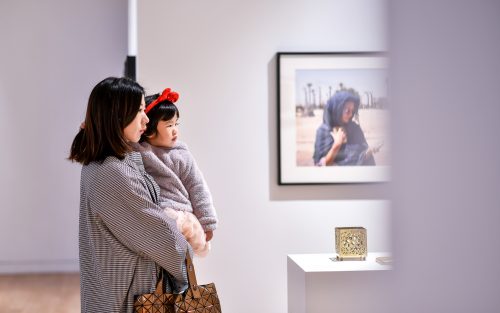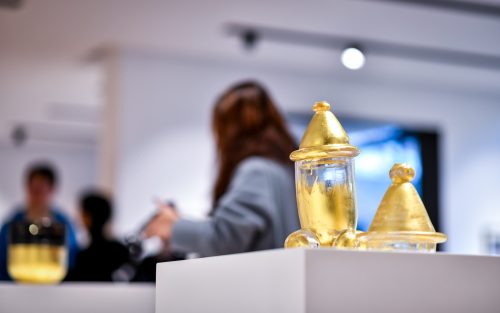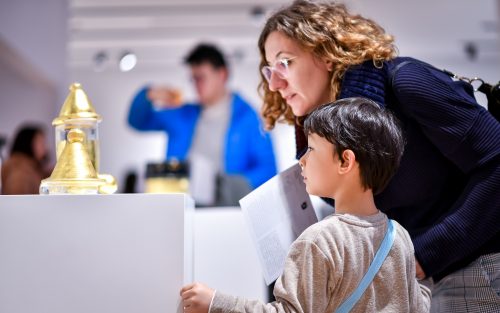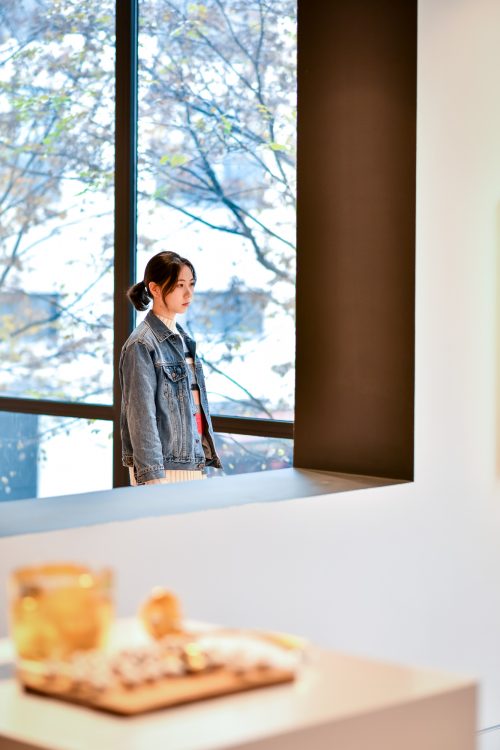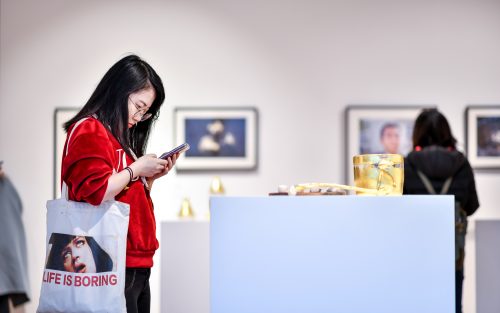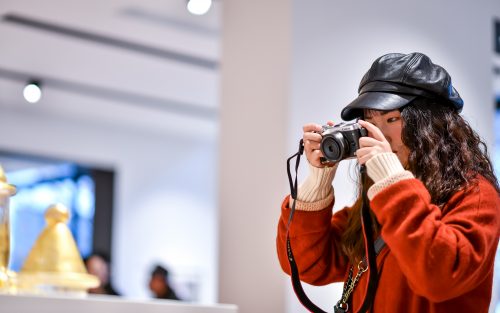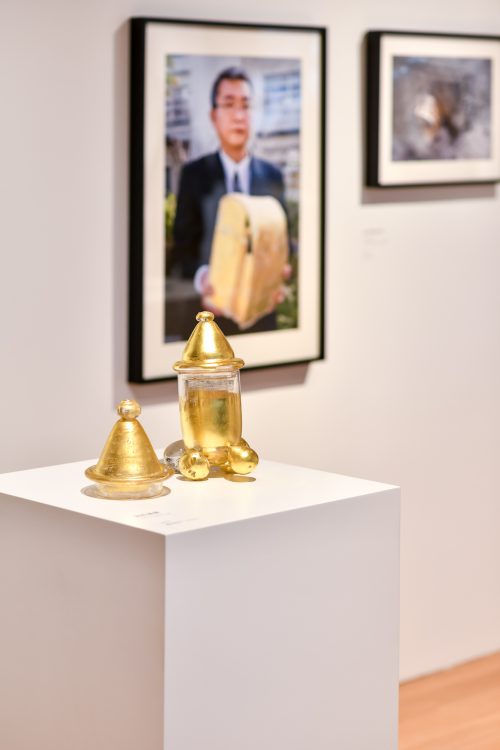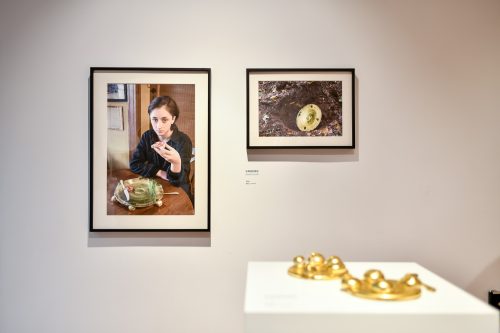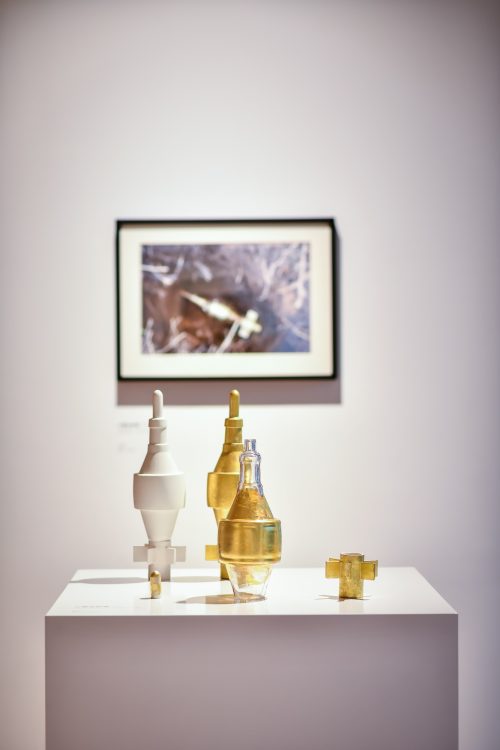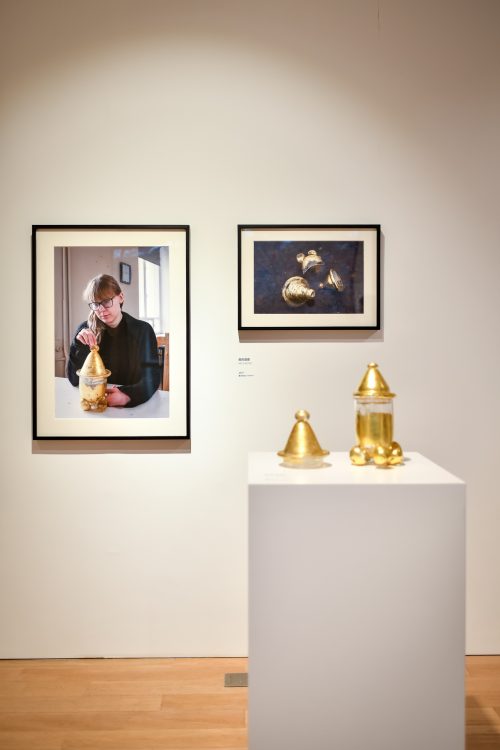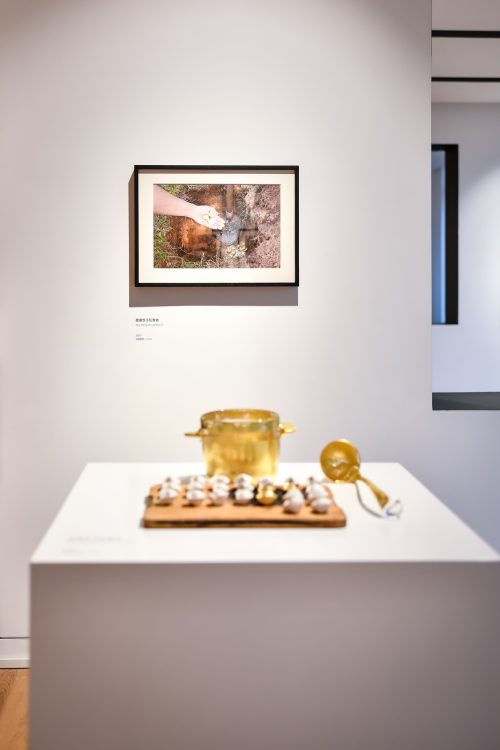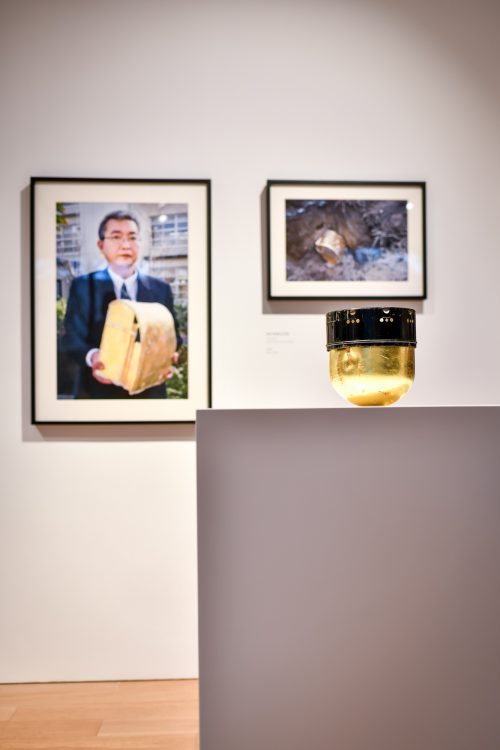我的考古学-中田一志个展 My Archaeology-Kazushi Nakada’s Solo Exhibition
策展人:阳昕
展览时间:2018年12月22日–2019年3月31日
展览地点:上海玻璃博物馆 设计新馆 H5临展厅
展览规划及平面设计:协调亚洲
Curator: Cathye Yang
Duration: December. 22th, 2018 –March. 31th, 2019
Venue: H5 Temporary Exhibition Hall, Design Wing ,Shanghai Museum of Glass
Exhibition Planning and Graphic Design: COORDINATION ASIA Ltd.
关于展览 ABOUT EXHIBITION
艺术项目“我的考古学”是一个观察未来的实验性项目,艺术家中田一志先生邀请世界各地的参与者,以与参与者合作的形式来完成艺术品的制作,并尽可能地将作品和他们的记忆进行永久性的保存,艺术家还将观察之后会发生的后续变化。参与者将被通过照片或视频进行记录,每件作品的概念也都源自他们个人的经历、想法或记忆。作品的表面还将刻上参与者的姓名、项目的名称、年份以及艺术家的一个问题:“在你的时空里,艺术是为何物?”。创作的最后,作品中的一件将被埋藏于大自然当中,埋藏处唯有参与者本人与艺术家知晓。这个艺术项目将成为他们记忆的一部分,并永远地存在于他们的脑海中……
Art project “My archaeology” is an experimental project that the artist, Kazushi Nakada produce art objects with participants and attempt to preserve the objects and their memory eternally. And the artist observe what will occur as sequential event later. The art objects will be made with collaboration with the participants. Idea of each objects are associated to their experience, thoughts or memories. On the surface of the object, the name of the participant, the project, year and my massage “what is art in your time?” are engraved. And the participants are documented with the objects by photography and video. At the end of the collaboration, one of the objects will be buried or hidden in nature. And the participants and the artist are only the one who knows the location of them. The art project becomes their memory and stay in their mind…
关于艺术家 ABOUT ARTIST

出生于1967年,日本石川县
www.kazushinakada.com
中田一志(Kazushi Nakada)是一位日本艺术家,于1991年移居欧洲。他曾居住于丹麦和英国,目前在芬兰赫尔辛基工作。
从日本一路走来,中田一志所走过的路和所经历的心路历程,也许是其他日本玻璃艺术家远不能及的。鉴于日本文化和社会的包容性和结构化,这本身就是一件很了不起的事情。他引用了一位著名茶艺大师Senno Rikuya的话当作自己人生的座右铭:“为达成所愿而坚定不移,这才是最应学习的品质。”
对于中田一志而言,工艺只不过是达成某个目的的一种手段。他所追求的目标也从来不是掌握某一门工艺。多年来,他在制作或大或小的玻璃作品的过程中,不断尝试吹制、铸造、冷加工、彩绘和镀镜工艺,利用所有的工艺尽可能地捕捉光影的魅力。
©DANKLEIN
1967, ISHIKAWA, JAPAN
www.kazushinakada.com
Kazushi Nakada is a Japanese artist who emigrated to Europe in 1991. He has previously been based in Denmark and the United Kingdom. He is currently based in Helsinki Finland.
“Both geographically and psychologically Kazushi Nakada has travelled a long way from his Japanese origins, further perhaps than any other Japanese artist working with glass. Considering the all-embracing and structured nature of Japanese culture and Japanese society this is in itself a remarkable. He quotes the words of Senno Rikuya, a famous tea ceremony master, as an important motivating factor in his life. “Strong determination to accomplish your wish is the best master to learn from”
For Kaz technique is no more than a means to an end. He is not interested in mastering a technique as an end in itself. Over the years he has experimented with blowing, casting, cold-working, painting and mirroring, using all of them to captivate the magic of light in as many ways as possible, sometimes with large scale installations, sometimes with much smaller objects…
©DANKLEIN
艺术家说 ARTIST's statement
在藏传佛教中有一部被称为“度亡经”(Burial dictionary)的经典。几个世纪以来,作为修行的一部分,僧侣们一直将这部经典藏在一个隐蔽的地方。传说当世界需要书里的知识时,它总会被发现。这部《中阴得度法》(Bardo Thodol)由印度高僧莲花生大师在8世纪所写,而美国人类学家伊文斯-温慈(Walter Evans-Wentz,1878 – 1965)发现了它并将其翻译为《西藏度亡经》。它传道的内容关于如何引领死去的灵魂通向解脱之路,以免往复轮回于妄想世界。相传这部经书是在第一次世界大战——一个各国竞相研发武器、生灵涂炭的严峻时刻——在印度被偶然发现的。
这一“人为埋藏——偶然发现”的过程影响了《我的考古学》这个艺术项目。早在2014年初项目就已经有了初稿,第一件作品则于2016年完成。这是一个实验性艺术项目,在项目过程中我与参与者合作创造了多件艺术品。如今该项目已遍及16个国家和19个不同地点。
通过与参与者的对话,我决定以“情景”为主要概念并创作一组艺术品。在对作品进行记录并拍下参与者的照片后,其中一件作品会被埋在了地下,并刻有项目名称、创作年份和我提出的问题,“在你的时空里,艺术是为何物?”。只有我和参与者知道埋藏地点,之后参与者将会与熟人和家人讨论这个项目。
项目中包括三种数据,埋藏的艺术品、影像和未被埋藏的艺术品,以及参与者的“情景记忆”。
根据每一情景所创作的系列艺术品中都会有一件被埋藏。这些艺术品或将在地下埋藏上数百年,或可能被偶然发现,在未来它们可能真的会成为考古文物。这些艺术品将在于自然界中静静地度过自己的光阴,一切都与当下无关。那么,这些物品应属于艺术还是考古?
参与者会记住关于这个项目的很多事情,这一记忆便是一种“情景记忆”。“情景记忆是以连续的形式适时呈现我们对经历和特定事件的记忆,如此我们可以对生活中任何特定时刻发生的实际事件进行重构。” 因此,这记忆本身就是项目的无形的艺术品,并且将在人们的脑海中传递下去。
现有的未被埋藏的艺术品和影像资料用来向观众展示和介绍项目。它们是唯一有形可见的证据,可以证明艺术项目《我的考古学》的存在。这些物品可以展现被掩埋的作品原本的样子,它们的形状、工艺……和材料。
埋藏的作品、人们的记忆、现存的影像,这三种数据将同时随着各自的时间轴向未来前进,没有人知道它们身上会发生什么。唯一可以想象到的结果便是它们被发现并成为考古所得。
这个项目就像一本刚刚开始创作的书,尚不知故事的走向。我越试着去写,试着去阐明,它就变得越虚假和虚构。它包含了来自世界各地的一些情景,人们可以借助这些情景思考任何事,可能是我们的生活、社会、文化或未来……一切皆可。当项目将来被发现时,我的艺术陈述或概念或许只是辅助性的补充。若将这一艺术项目视作一本书,那么前言和第一章是艺术品本身,是参与者脑海中所创造的情景记忆和埋葬它们的过程,而我希望所有遇见这个项目的人能在心中书写接下来的故事。
如果一千年后这些作品被发掘出来,人们会产生哪些猜想?如果他们知道这是一件艺术作品,或一个艺术项目,它有意利用考古学将个人的想法和信息传递给未来,那么那个时代的艺术史学家和策展人会如何评价这个项目呢?
In Tibetan Buddhism, there is a scripture called “Burial dictionary”. Monks keep the scripture in a hidden place for centuries as a part of practice. There is a legend that it will always be found when the world needs its knowledge. This scripture, Bardo Thodol, was written by the Indian monk Padmasaṃbhava in the 8th century, and then the American anthropologist Walter Evans-Wentz (1878-1965) discovered it and translated it as the Tibetan Book of the Dead. This written preaching is about leading the dead souls to the road of liberation so as not to stay in samsara anymore in the world of delusion. According to a story, it was discovered by accident in India during the First World War, in which an enormous number of casualties was caused and the competition of developing slaughter weapons became a serious problem.
This process of “hide to discover” inspires my art project “My Archaeology” initially. In early 2014, it already had a draft and the first work was completed in 2016. This is an experimental art project in which I produce art objects in collaboration with participants. It has been extended in 16 different countries and 19 different locations already.
In the working process, through dialogues with each participant, I decide to use “episode” as a main concept. Meanwhile, a body of art objects is made. After documenting the art objects and taking portrait photo of each participant, I buried one of those objects in the ground. The name of project, the year and the message “What is art like in your time?” from me are engraved on the surface of the object. Only the participants and I know the reserve location. Later the participants will talk to their acquaintances and families about this project.
The project consists of three kinds of data, the buried art objects, the existing art objects & photography and the “episodic memory” of participants.
From each episode, one of art objects is buried. They will be there for hundreds of years or they might be discovered by chance. Those might really become archeological items in future will exist in nature and spend their own time at all regardless of present. Then would these objects be art or Archaeology when they are discovered?
Participants will remember so many things about the project. It is called “episodic memory”. “It represents our memory of experiences and specific events in time in a serial form, that we can reconstruct the actual events that took place at any given point in our lives.” His/her memories per se are shapeless art objects of the project which may exist in one’s mind through generations.
Existing art objects as well as pictures are exhibited to audience and introduce the project. They are the only tangible and visible evidence which proofs that the art project “My Archaeology” exists. The objects can describe how the buried object might look like. It describes shape, techniques…and material.
These three data, art objects, memories, and photographs and videos, will simultaneously advance their respective time axes toward future. Nobody knows what is going to happen to them. The only imaginable outcome would be that they are discovered and become archaeological items.
This project is like a book that I have just started writing and do not know how the story goes. The more I try to write and clarify, the more fake/fictional it gets. There are several episodes from around the world in this project and people can think about anything through them. It could be our life, society, culture or the future…It could be anything. My art statement or concept can be merely supplemental when the project is discovered in future. If we regard this project as a book, then the preface and chapter 1 are the art objects per se, the episodic memories in participants’ mind and the process of burying the objects. And I hope everyone who encounters this project will spell the following chapters in their hearts.
What will the people in future guess if these objects are excavated 1000 years later? And if they understand that this is an art work (art project) intentionally using archaeology and sending personal thoughts and messages to future, how would art historians and curators evaluate this project?
相关文章 Related Texts
Art project “My Archaeology”
艺术项目《我的考古学》
Kazushi Nakada
Eternity in an Hour
刹那即永恒
阳昕
Reaching New Heights of Art Project-Mr. Kazushi Nakada’s Work
突破艺术项目的新高度——中田一志先生的工作
Ruriko Tsuchida
Zero to one/One to zero
零到一/一到零
Michael Rogers
For more information, please go to our page on WeChat
更多展览资讯请参阅微信公众号《我的考古学》展览专页
